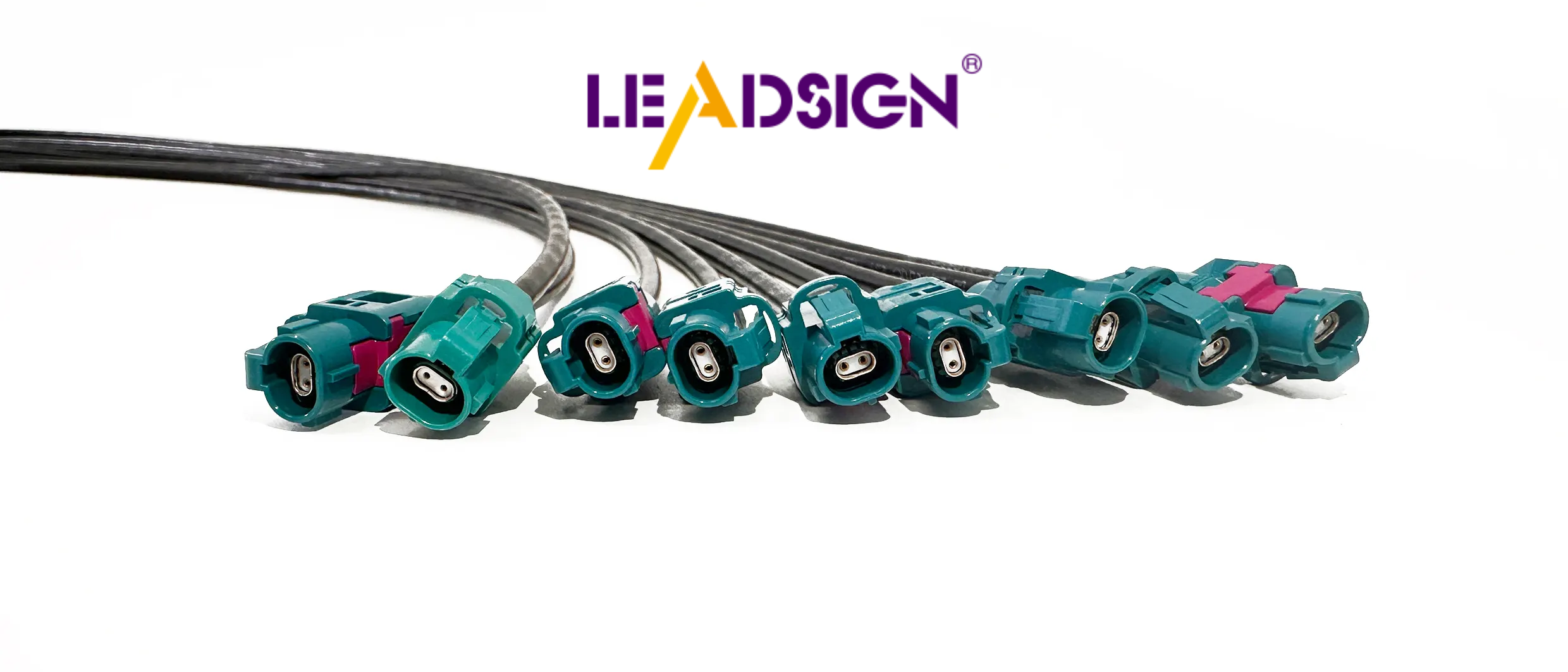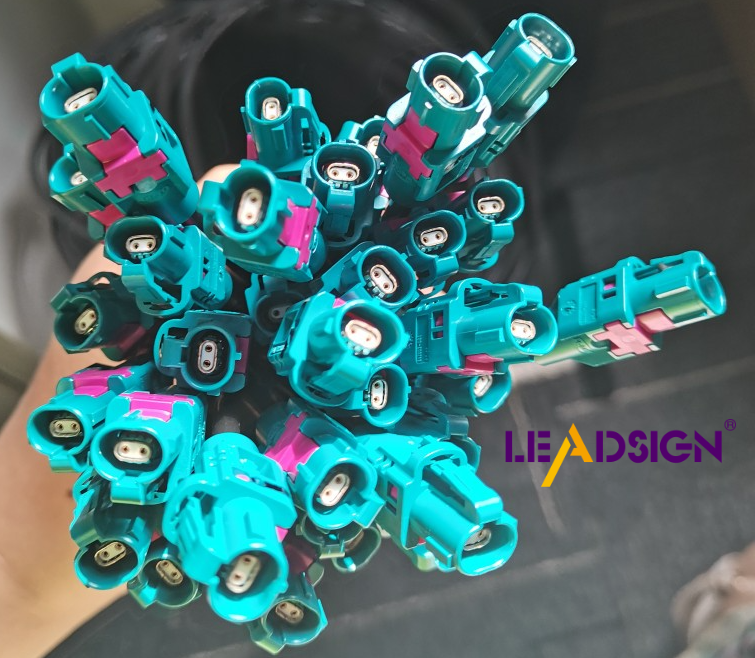Exploring H-MTD and Automotive Wire in Driver Assistance Systems

Wiring is crucial in modern cars, acting like a nervous system connecting various components. The market for automotive wire is rapidly expanding and could be worth USD 115.9 billion by 2032. This growth reflects the increasing demand for enhanced car parts and more electric vehicles. H-MTD is a fast data technology that plays a significant role today, improving the efficiency and safety of driver assistance systems. Automotive wires facilitate seamless communication between sensors and control units, making them essential for smart driver systems.
Understanding H-MTD in Driver Assistance Systems

What is H-MTD?
H-MTD means High-Speed Modular Twisted-Pair Data. It is a big step forward in car tech. Made by Rosenberger Hochfrequenztechnik GmbH & Co., this system uses Ethernet tech. It's built for wired networks in cars. It helps data move faster, great for things like high-res screens, cameras, radar, backseat fun, self-driving, and entertainment.
Key Features of H-MTD
The H-MTD system has many important features:
High-Speed Data Transmission: It can handle up to 20 gigahertz and send data super fast.
Modularity: Its design is flexible. It works with many Ethernet uses and industry rules.
Compact Design: It's small and light. This saves space and weight in cars.
Zonal Architectures: Car makers use it to make smart zones in cars for better connection.
Uses of H-MTD in Cars
Role of H-MTD in Driver Help Systems
In driver help systems, H-MTD is key. It links sensors, cameras, and control units together. This helps share real-time data for advanced driving help. This link makes the car watch its surroundings better and stay safe.
Mixing H-MTD with Other Techs
H-MTD works well with other car technologies too. It's easy to connect with standard signals like AMEC. This makes it useful for smart, self-driving cars that are connected to everything around them.
Basics of Car Wires in Driver Help Systems
Car wires are very important for driver help systems. They connect all parts so they can talk to each other. Knowing about different car wires helps keep cars safe and working well.
Kinds of Car Wires
Common Wire Types
Common car wires include PVC, GXL, and TXL types. These are used for simple electric jobs in cars. PVC wire is strong and bends easily, good for most uses. GXL wire can handle heat, perfect for engines. TXL wire is light because it has thin covering but still works well.
Special Wire for Driver Help Systems
Driver help systems need special car wires for tough jobs. These have extra layers to stop signal problems from other electronics. Fast data cables like H-MTD help sensors and controls talk quickly. This wiring helps with smart features like cruise control and lane keeping.
Why Car Wires Matter for Safety and Performance
Keeping Things Working with Car Wires
Good car wires make sure driver help systems work right by keeping connections steady. Strong wires lower the chance of things breaking, which keeps cars safe. Makers use tough stuff to make wires that last in hard conditions.
How Car Wires Affect System Work
Driver help systems work better with good car wires. Good wiring saves energy and makes the car's electric system work better. It helps things react faster and read sensors more correctly. This makes driving nicer and helps create smarter driver help tech.
Standards and Best Practices for Automotive Wire
Industry Standards for Automotive Wiring
Compliance Requirements for Automotive Wire
Car wires must follow strict rules for safety. These rules make sure wires can handle tough car conditions. Following these rules keeps cars working well. Makers need to know the latest rules to meet industry needs.
Key Regulatory Bodies Governing Automotive Wire
Many groups set standards for car wires. They make guidelines to keep products safe and working right. Important groups are:
SAE International: Sets global engineering standards.
ISO (International Organization for Standardization): Creates international quality and safety standards.
UL (Underwriters Laboratories): Gives safety checks for car parts.
These groups help make sure cars are safe and work well.
Best Practices for Automotive Wire Implementation
Installation Techniques for Automotive Wire
Good installation is key for car wires. Workers must connect wires safely and protect them. Important steps include:
Using appropriate tools: Makes strong connections.
Following manufacturer guidelines: Uses specific instructions.
Implementing protective measures: Guards against heat and wetness.
These steps help wires last longer.
Maintenance and Troubleshooting of Automotive Wire
Regular care is important for car wires. Checking often finds problems early. Important care steps include:
Conducting visual inspections: Spots damage or wear.
Testing electrical connections: Checks if things work right.
Replacing damaged components: Stops bigger issues.
Good care keeps systems safe and working well.
Supplier Considerations for Automotive Wire and H-MTD
Picking the Best Supplier for Automotive Wire and H-MTD
Choosing a good supplier is important for car systems. Here are some things to think about:
Things to Think About When Picking Suppliers
Quality Assurance: Suppliers need to follow rules like ISO-6722-1. This makes sure products last long.
Experience and Expertise: Find suppliers who know a lot about car wires and H-MTD.
Innovation Capability: Check if they can use new tech, like smart zones in cars.
Cost Efficiency: Look for fair prices but still get good quality.
Checking What Suppliers Can Do for Automotive Wire and H-MTD
Technical Support: They should help with tech problems during setup.
Customization Options: They should offer special solutions for different cars.
Supply Chain Reliability: Make sure they have steady supplies to avoid delays.
New Ideas and Future Trends in Automotive Wire and H-MTD
The car world is changing fast with new tech shaping wires and connections.
New Tech in Automotive Wire and H-MTD
Zonal Architectures: Rosenberger H-MTD® helps build smart self-driving cars, ready now and later.
Weight and Size Reduction: New cables are lighter, making cars work better and cost less.
Future of Car Wires and H-MTD
Increased Data Transmission: As cars connect more, fast data sharing will be needed.
Sustainability Focus: Future changes will likely use green materials.
Integration with AI: Wires will work more with AI to make smarter cars.
Knowing these ideas helps makers choose better for safer, better cars.
H-MTD and car wires are very important for driver help systems. They help cars connect and share data well. Rosenberger says car systems need strong wires like H-MTD. These wires make cars safer and work better.
"Rosenberger H-MTD® connectors handle this job, making data move fast and safely."
Knowing new tech in this area is key. As cars change, using these new ideas will make them smarter and safer.
See Also
Essential HSD Connector Knowledge for Automotive Professionals
Significance of HSD Connectors in Automotive Sector
Benefits of HSD Connectors in Auto Entertainment Systems
Benefits of HFM Connectors in Automotive Sector
Enhancing Auto Data Transfer: Advanced Connectors and Cables

